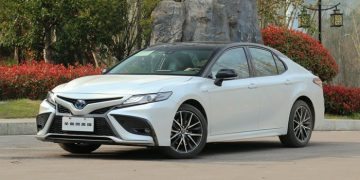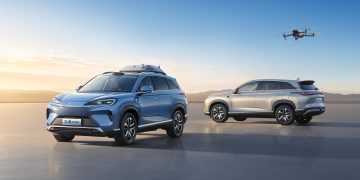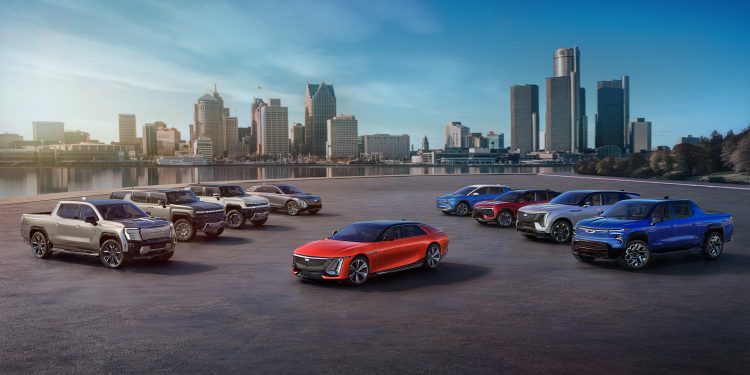Introduction: The Growing Challenge of Urban Air Pollution
Urban air pollution has become one of the most pressing environmental and public health concerns of the modern era. According to the World Health Organization (WHO), more than 90% of the world’s urban population is exposed to air quality levels that exceed the organization’s recommended limits. This exposure has been linked to various health problems, including respiratory diseases, heart conditions, and premature deaths. As the global urban population continues to grow, the problem is only expected to intensify.
One of the primary contributors to urban air pollution is the transportation sector. Fossil fuel-powered vehicles, which are prevalent in cities worldwide, emit pollutants such as carbon monoxide (CO), nitrogen oxides (NOx), particulate matter (PM), and volatile organic compounds (VOCs). These pollutants contribute significantly to smog, poor air quality, and climate change. In this context, electric vehicles (EVs) have emerged as a promising solution to improve urban air quality by reducing emissions and decreasing reliance on fossil fuels.
In this article, we will examine how electric vehicles can help reduce urban air pollution, focusing on their impact in major cities with high vehicle density. We will explore the key pollutants that electric vehicles can mitigate, the broader environmental benefits of EV adoption in cities, and the challenges and opportunities for integrating EVs into urban environments.
The Impact of Air Pollution on Urban Populations
Urban air pollution has far-reaching consequences for public health. The presence of high concentrations of harmful pollutants in the air can exacerbate respiratory conditions like asthma, bronchitis, and other chronic obstructive pulmonary diseases (COPD). In densely populated cities, where the number of vehicles on the road is high, exposure to these pollutants can lead to a variety of acute and chronic health problems. Vulnerable groups, such as children, the elderly, and individuals with pre-existing health conditions, are particularly at risk.
Moreover, air pollution in cities is not just a health issue—it also has economic implications. The healthcare costs associated with treating pollution-related diseases are significant, and poor air quality can reduce worker productivity, particularly in industries that rely on outdoor labor. Thus, addressing urban air pollution can have both health and economic benefits, making the case for transitioning to cleaner alternatives such as electric vehicles even stronger.
How Electric Vehicles Can Mitigate Urban Air Pollution
1. Zero Tailpipe Emissions
One of the key advantages of electric vehicles is that they produce zero tailpipe emissions. Traditional gasoline and diesel vehicles emit carbon monoxide, nitrogen oxides, particulate matter, and other harmful pollutants into the air through their exhaust systems. These pollutants contribute to the formation of ground-level ozone (smog) and fine particulate matter, both of which are linked to a range of health problems.
Electric vehicles, on the other hand, do not have exhaust pipes and therefore do not emit any of these pollutants. This is especially important in cities where traffic congestion and high vehicle density often result in elevated levels of air pollution. By replacing internal combustion engine (ICE) vehicles with electric vehicles, cities can significantly reduce the amount of harmful emissions in the air.
2. Reduction of Nitrogen Oxides (NOx) and Fine Particulate Matter (PM2.5)
Nitrogen oxides (NOx) and fine particulate matter (PM2.5) are two of the most harmful pollutants emitted by vehicles. NOx is a precursor to the formation of ground-level ozone, which can irritate the lungs and exacerbate asthma and other respiratory diseases. PM2.5, which consists of tiny particles less than 2.5 micrometers in diameter, can penetrate deep into the lungs and bloodstream, causing cardiovascular and respiratory diseases.
Electric vehicles produce no tailpipe emissions, including NOx and PM2.5. As a result, the widespread adoption of EVs can directly contribute to reducing the concentrations of these harmful pollutants in urban environments. This reduction is particularly important in cities that suffer from chronic smog and poor air quality, as it can lead to significant improvements in public health outcomes.
3. Reduction of Carbon Monoxide (CO) Emissions
Carbon monoxide (CO) is another pollutant commonly emitted by gasoline and diesel vehicles. CO can interfere with the body’s ability to transport oxygen, leading to dizziness, confusion, and, in extreme cases, death. Although CO levels are generally lower in urban areas compared to rural areas, they are still a concern in cities with high traffic volumes.
Electric vehicles, by virtue of being powered by electricity rather than gasoline, produce no carbon monoxide. In densely populated cities where traffic congestion is a major issue, the reduction of CO emissions from vehicles can significantly improve air quality and public health. Moreover, with the transition to EVs, cities can move closer to reducing their overall carbon emissions, which is crucial in the fight against climate change.
4. Improvement in Urban Air Quality During High Traffic Hours
High traffic volumes and congestion are characteristic of major cities around the world. During peak traffic hours, the concentration of pollutants from vehicles tends to reach its highest levels, leading to dangerously high levels of air pollution. EVs can play a crucial role in improving air quality during these times. Since they produce no emissions at the tailpipe, the more EVs are on the road, the fewer pollutants are generated during high-traffic periods.
In cities that experience frequent traffic jams, such as Los Angeles, New Delhi, and Beijing, EVs can significantly alleviate the air pollution crisis, particularly during rush hours when emissions are at their peak. By replacing ICE vehicles with EVs, cities can reduce the pollution burden on citizens and improve overall air quality during times of intense traffic congestion.

The Broader Environmental Benefits of Electric Vehicles in Urban Areas
1. Reduction in Noise Pollution
In addition to air pollution, cities are often plagued by high levels of noise pollution. Internal combustion engine vehicles are a major source of this noise, particularly in densely populated urban areas. The noise from car engines, honking, and traffic congestion can contribute to stress, sleep disturbances, and decreased quality of life for residents.
Electric vehicles, by contrast, operate much more quietly than their gasoline or diesel counterparts. This makes EVs an excellent solution to help reduce noise pollution in urban areas. With their quieter operation, EVs can contribute to a more peaceful and livable urban environment, improving the well-being of city dwellers.
2. Reduction of Greenhouse Gas Emissions
Although the primary focus of electric vehicles in this article is their impact on air quality, it is important to note that EVs also contribute to the reduction of greenhouse gas (GHG) emissions. The transportation sector is one of the largest sources of GHGs, and replacing gasoline and diesel vehicles with electric vehicles is one of the most effective ways to reduce these emissions.
In cities that rely on coal or fossil fuels for electricity generation, the immediate benefits of EVs in terms of emissions reduction may not be as significant. However, as more cities transition to renewable energy sources, the environmental benefits of EVs will become even more pronounced. Cleaner electricity generation combined with electric vehicle adoption can contribute to reducing both local air pollution and global carbon emissions, supporting efforts to combat climate change.
3. Encouraging the Transition to Sustainable Mobility
The adoption of electric vehicles is often part of a broader shift toward sustainable mobility solutions in urban areas. In addition to electric vehicles, cities are increasingly investing in alternative transportation options, such as public transit, cycling infrastructure, and shared mobility services. By promoting a more sustainable transportation system, cities can reduce overall traffic congestion, lower emissions, and improve air quality.
Electric vehicles complement these efforts by offering an eco-friendly alternative for private transportation, reducing the reliance on fossil fuels and helping to decarbonize the transport sector. Cities that embrace EVs as part of their sustainability strategies are setting an example for other regions to follow, showing that it is possible to build greener, healthier, and more livable urban environments.
The Challenges and Opportunities of Integrating EVs into Urban Environments
1. Charging Infrastructure and Accessibility
One of the key challenges to the widespread adoption of electric vehicles in urban areas is the availability of charging infrastructure. In many cities, there are not enough public charging stations, making it difficult for people to transition to EVs. The lack of accessible charging infrastructure is particularly problematic for residents of high-density urban areas who may not have access to home charging.
To overcome this challenge, cities must invest in the expansion of public charging infrastructure. This includes installing charging stations in strategic locations such as parking lots, shopping centers, and transit hubs, as well as providing incentives for businesses and homeowners to install private chargers. By making EV charging more accessible and convenient, cities can encourage more people to adopt electric vehicles, improving air quality and reducing pollution.
2. Electric Vehicle Affordability
While the cost of electric vehicles has been steadily decreasing in recent years, they are still more expensive upfront than their traditional gasoline counterparts. The higher initial purchase price of EVs can be a barrier for many individuals, particularly in lower-income urban areas.
Government incentives, such as subsidies, tax credits, and rebates, can help reduce the cost of EVs and make them more accessible to a wider range of consumers. Additionally, as the demand for electric vehicles increases and production scales up, prices are expected to continue to fall, making EVs more affordable for urban residents.
3. Integrating EVs into Public Transport Systems
To truly transform urban air quality, electric vehicles need to be integrated into public transport systems. Many cities have begun adopting electric buses and taxis as part of their efforts to reduce emissions from public transportation. Electric buses, for example, are an excellent solution for reducing emissions in urban centers, as they can significantly reduce the amount of pollution produced by the transportation sector.
Cities should continue to expand the adoption of electric public transport, integrating electric buses, trams, and taxis into their fleets to complement the adoption of private electric vehicles. This would further reduce emissions and air pollution while providing a more sustainable and cost-effective mode of transportation for residents.
Conclusion: A Cleaner, Healthier Urban Future
Electric vehicles have the potential to significantly improve urban air quality by reducing the emissions of harmful pollutants such as nitrogen oxides, particulate matter, carbon monoxide, and volatile organic compounds. By transitioning from fossil fuel-powered vehicles to electric vehicles, cities can reduce traffic-related air pollution, improve public health, and contribute to global climate goals.
While challenges such as charging infrastructure and affordability remain, the benefits of EV adoption are clear. Through continued investment in infrastructure, government incentives, and public awareness, cities can accelerate the transition to electric vehicles and create cleaner, healthier urban environments for future generations.











































